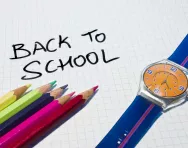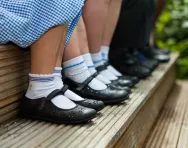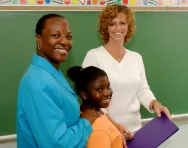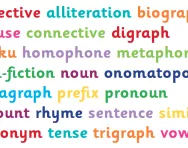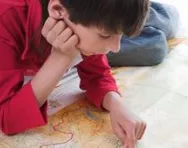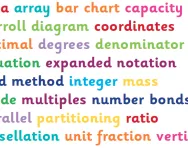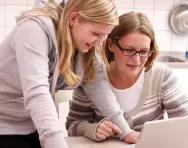Important update from TheSchoolRun
For the past 13 years, TheSchoolRun has been run by a small team of mums working from home, dedicated to providing quality educational resources to primary school parents. Unfortunately, rising supplier costs and falling revenue have made it impossible for us to continue operating, and we’ve had to make the difficult decision to close. The good news: We’ve arranged for another educational provider to take over many of our resources. These will be hosted on a new portal, where the content will be updated and expanded to support your child’s learning.
What this means for subscribers:
- Your subscription is still active, and for now, you can keep using the website as normal — just log in with your usual details to access all our articles and resources*.
- In a few months, all resources will move to the new portal. You’ll continue to have access there until your subscription ends. We’ll send you full details nearer the time.
- As a thank you for your support, we’ll also be sending you 16 primary school eBooks (worth £108.84) to download and keep.
A few changes to be aware of:
- The Learning Journey weekly email has ended, but your child’s plan will still be updated on your dashboard each Monday. Just log in to see the recommended worksheets.
- The 11+ weekly emails have now ended. We sent you all the remaining emails in the series at the end of March — please check your inbox (and spam folder) if you haven’t seen them. You can also follow the full programme here: 11+ Learning Journey.
If you have any questions, please contact us at [email protected]. Thank you for being part of our journey it’s been a privilege to support your family’s learning.
*If you need to reset your password, it will still work as usual. Please check your spam folder if the reset email doesn’t appear in your inbox.
Your child's new school year preparation plan
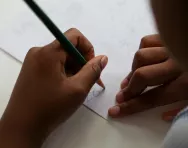
Want to help prepare your child for their next academic year? Looking closely at one key objective will help to give them the best start possible.
Getting ready for Reception
Pre-Reception literacy objective: Begin to use capital letters and full stops
It might seem a little young for your child to be learning this at age 4 or 5, but it’s important for both their reading and writing development to understand about sentences and how they’re used. In Reception they’ll be focusing on simple sentences with just one element, for example 'The cat sat on the mat', rather than 'The cat sat on the mat and so did the dog'.


Start a unique learning programme!
- Weekly programme for each school year
- Worksheets sent direct to your inbox
- Keeps your child's learning on track
Do try this at home:
- Explain that a sentence has to make sense! To illustrate this, read a few sentences from a favourite book.
- Look together at where the capital letters and full stops are.
- Have your child dictate a silly sentence to you and write it. Do this a few times; sometimes miss out the capital letter or full stop and have them correct you.
Pre-Reception numeracy objective: Count objects to 10
Your child can probably count 10 objects, but improving their accuracy can be enormously valuable. The objective here is not to count to 10, but that they develop a ‘concept of number’, i.e. they know what a collection of 10 objects looks like.
Do try this at home:
- When out and about have them count (six apples in the supermarket, four swings in the park, eight red cars on a walk).
- At home ask them to count their teddies, dolls, shoes etc. This can all be done through play, for example when playing schools with their teddies ask, “How many children are here today, teacher?”
Getting ready for Year 1
Pre-Y1 literacy objective: Sequence events in a familiar story
Now’s the time to encourage your child to think about the stories that are read to them. Of course, sometimes it’s important they still have stories just for stories’ sake, but at times extend their learning by asking them questions about what they’ve heard.
Do try this at home:
- At bedtime sometimes ask them to tell you a story instead of you reading to them – make sure it’s a really familiar one, like a traditional tale.
- Working with them, make a book of one of their favourite stories by asking them to draw pictures depicting the sequence of the story.
Pre-Y1 numeracy objective: Addition using numbers 0-10
Understanding the concept of addition is vital before children go on to writting completing calculations, otherwise they won’t understand when addition can be used in real-life situations.
Do try this at home:
- At meal times use the ‘language of addition’ when talking about food (for example, “You’ve got one spoonful of carrots and two of peas, that’s three spoonfuls of vegetables altogether”).
- Challenge your child to categorise their soft toys in certain ways (all bears together, all pink toys together, all small or medium-sized toys together, etc.), then have them count how many of them are in two of the groups combined.
Getting ready for Year 2
Pre-Y2 literacy objective: Use and write non-fiction texts
Non-fiction texts are a vital learning tool and teaching your child to learn how to use them from an early age can help them become independent learners.
Do try this at home:
- Visit the library, make a beeline for the non-fiction / reference section and look for books on your child’s latest passion, from football or Lego to ballet or ponies. Once your child has read a few non-fiction titles, encourage them to write their own including a contents page, a glossary and a blurb for the back.
Pre-Y2 numeracy objective: Solve real life addition story problems
There’s very little point to maths unless children see how it is used in every day scenarios; this is why story problems are used so frequently throughout the primary phase.
Do try this at home:
- Have them write their own story addition problem, for example: Jake had 7p and Bella had 20p. How much money did they have? They can use real-life friends in the story, or family members.
Getting ready for Year 3
Pre-Y3 literacy objective: Understand how different texts are organised
Using text formats which are used by adults (instructions, newspapers) can be a really big motivator as it’s something fun, thought-provoking and ultimately grown-up!
Do try this at home:
- Look together at a selection of articles from magazines. Have them think of a subject they are knowledgeable about (football or dance, for example). Get them to write a newsy article around this topic. Encourage them to use a headline, sub-headings and to double proof-read once they’ve completed it – this is going in a magazine after all!
- Foxed by technology? If you’re one of the growing number of adults who gets their offspring to program the DVR / change the settings on an app, ask your child to write you step-by-step instructions.
Pre-Y3 numeracy objective: Recall all number facts for numbers 0-20
Your child will have been covering number facts (doubles, number bonds, etc.) since Year 1, but as it’s so important they revisit them again in Year 3 to consolidate their learning.
Do try this at home:
- Give them a timed quiz of 20 number fact questions – how long does it take them to answer them all? By the end of Year 3 they should ‘just know’ the answers rather than having to stop and work them out.
- Then let them write a similar quiz for you. They’ll find it highly amusing if you purposefully get some wrong and they have to correct you!
Getting ready for Year 4
Pre-Y4 literacy objective: Collect interesting adverbs
In order for children to improve the quality of their writing they need to think critically about words they use and what ones are more interesting to readers. Learning more unusual adverbs can improve their story writing immensely.
Do try this at home:
- Write a sentence with no adverbs, have them improve it by adding some in.
- Collect adverbs onto a list from the book they’re currently reading – they might find it interesting to classify them.
Pre-Y4 numeracy objective: Converting between units of time
In Year 4 children learn about the 12-hour and 24-hour clock and also how to convert between hours/minutes and minutes/seconds.
Do try this at home:
- Every now and again, ask them to look at an analogue clock and tell you what the time is. Can they give you this time as a 24-hour clock time?
- Give them some 'real-life' problems: explain that you need to start cooking dinner in 144 minutes. Can they tell you what this is in hours and minutes? Allow them to do some working on a piece of paper if they need to.
Getting ready for Year 5
Pre-Y5 literacy objective: Adapt sentence structure to different text types
As adults we know that the way information is presented can vary enormously – think of the way the same news might be presented in The Sun and The Guardian. This objective is to get them to analyse text types and to manipulate their own writing to suit.
Do try this at home:
- Have them think of a news story, or even of a fictional tale such as Little Red Riding Hood. Ask them to write the story once for a magazine aimed at older children, and once for young children. Remind them to think of the language they use, making it age appropriate.
- Compare the news as it is presented in the children's newspaper First News and a broadsheet and a tabloid title. What differences can your child identify?
Pre-Y5 numeracy objective: Reading timetables using the 24-hour clock
This is a life skill they’ll certainly need! As an added bonus you can hand over all trip-planning responsibilities for a while (though you might want to double-check their estimates at the beginning…).
Do try this at home:
- Pick up some timetables from local bus and train stations and have them plan a fictional adventure, working out their route with times and changes. They might like to draw some pictures of things they’ll do and see on their escapade!
Getting ready for Year 6
Pre-Y6 literacy objective: Discuss personal reading with others
Being able to describe characters, plots and settings helps children to fully understand and appreciate literature.
Do try this at home:
- Encourage them to read book reviews in newspapers and magazines, noting the format employed. If any of the books appeal, find out if you can reserve them or request for them to be purchased at your local library. Alternatively you could give your child a small budget and send them book-shopping with a summer reading wish list.
Pre-Y6 numeracy objective: Represent data in a range of formats
Conveying findings through charts and graphs is a theme in numeracy throughout the primary age-phase and continues into secondary learning too. In Year 6 children need to get more accurate in how they represent data.
Do try this at home:
- Have them conduct a survey amongst friends and family on something that interests them. Encourage them to choose a few ways to show the data found (for example a bar graph, table, etc.). Get them to select the most appropriate method for the survey and to explain their reasoning.
Getting ready for Year 7
Pre-Y7 literacy objective: Understand that some fictional texts are of particular significance or of historical importance
As your child prepares to start secondary education it’s time to start thinking critically about literature and its impact on society and culture.
Do try this at home:
- Visit your local library and look through some of the classics (front covers, blurbs, etc.). Do any of them appeal to your child? Do they know any of the stories from film or TV adaptations?
- At home, help them research some significant texts and authors online. Encourage them to question if some books are more important than others, or if this varies from person to person.
Pre-Y7 numeracy objective: Measure angles
This skill is learnt in the primary years; in secondary school they will need to measure angles with increasing accuracy.
Do try this at home:
- Have them estimate the size of the angles on various household objects and see how close they get to the actual angle.
- Encourage them to judge angle comparisons (for example, “Is the corner of this cup a sharper angle than that box?”). They can then measure to check if they were correct.

